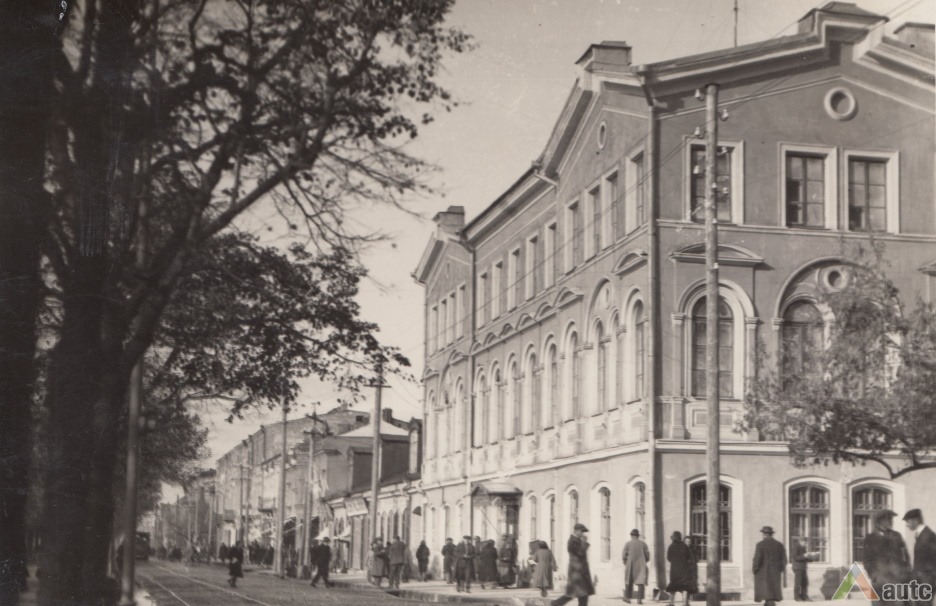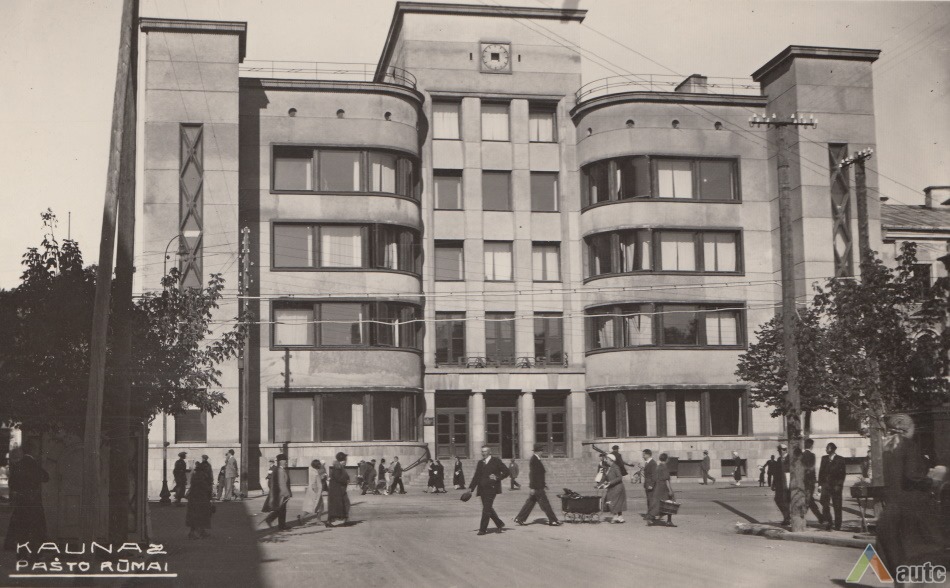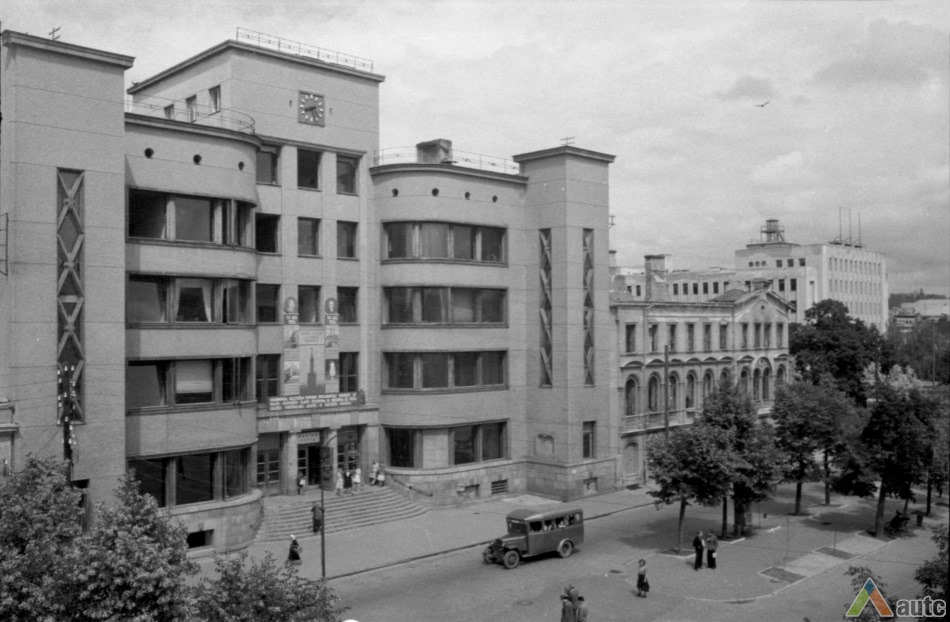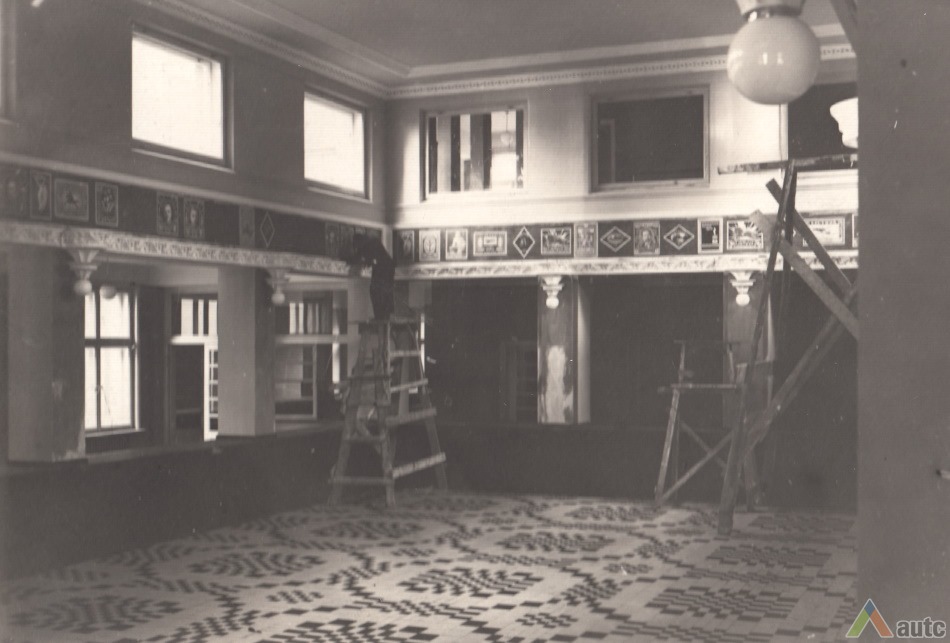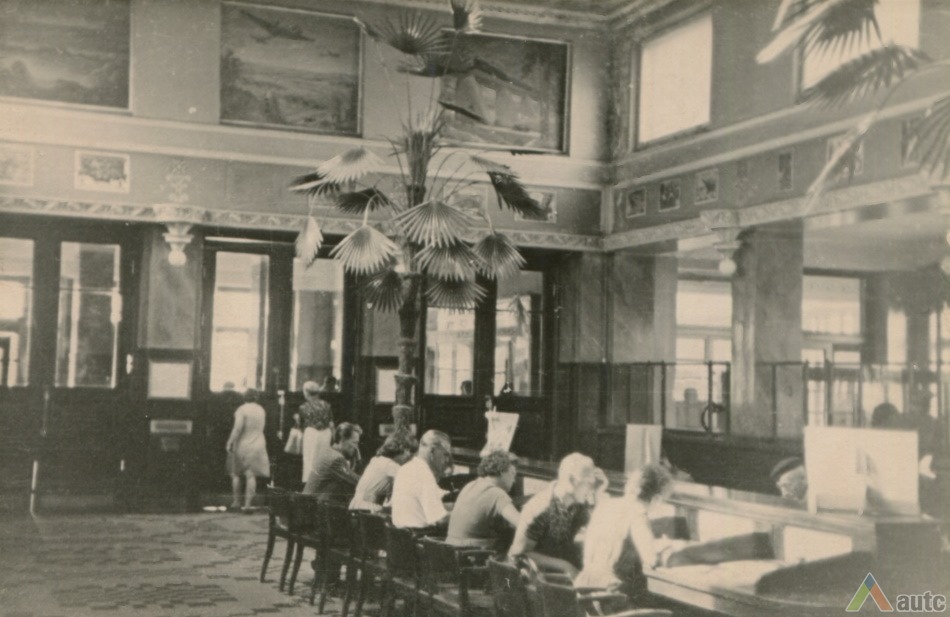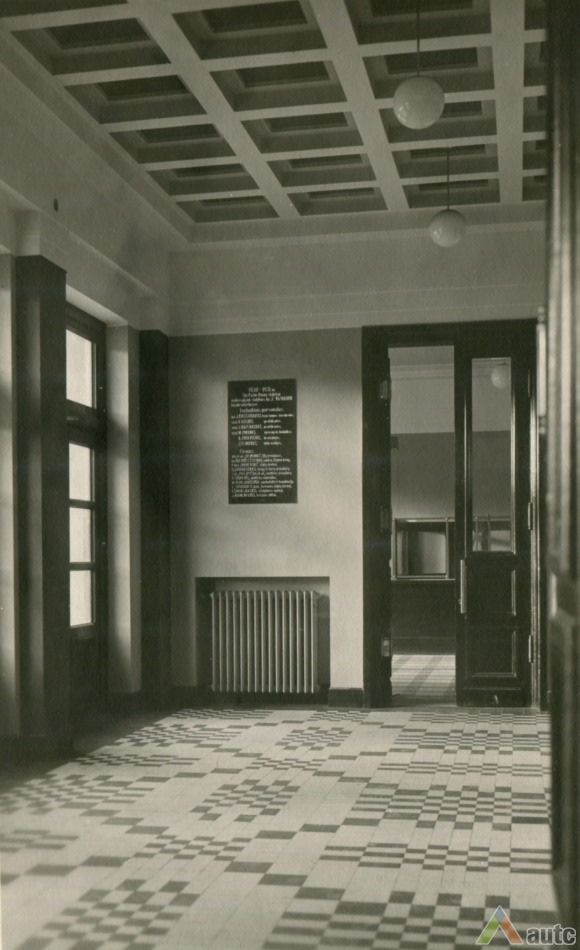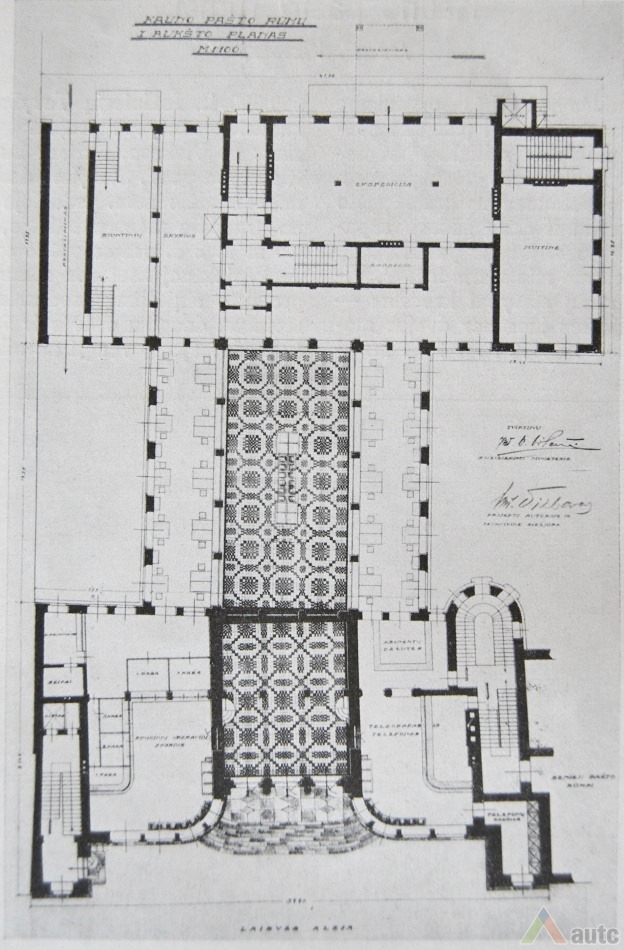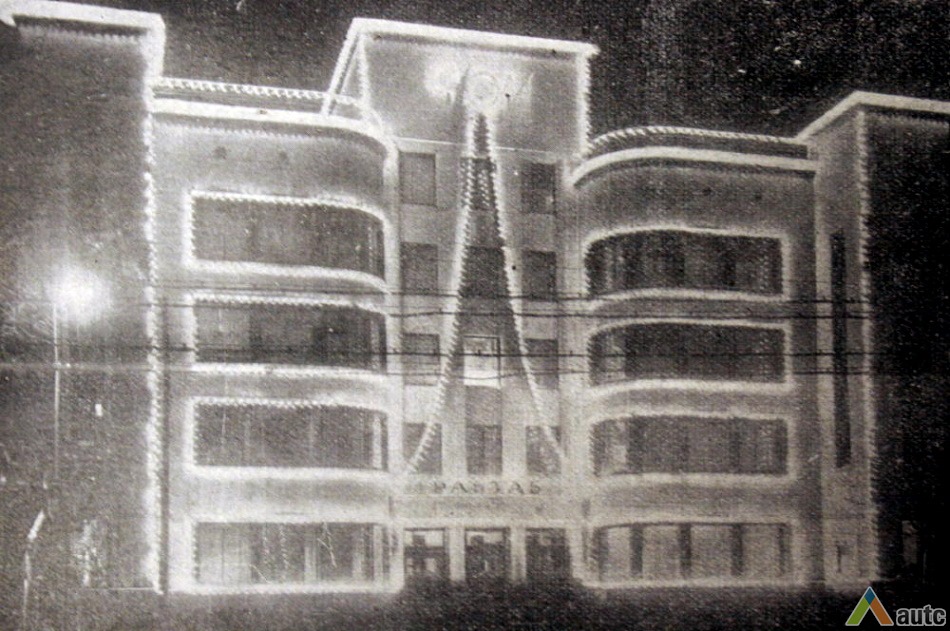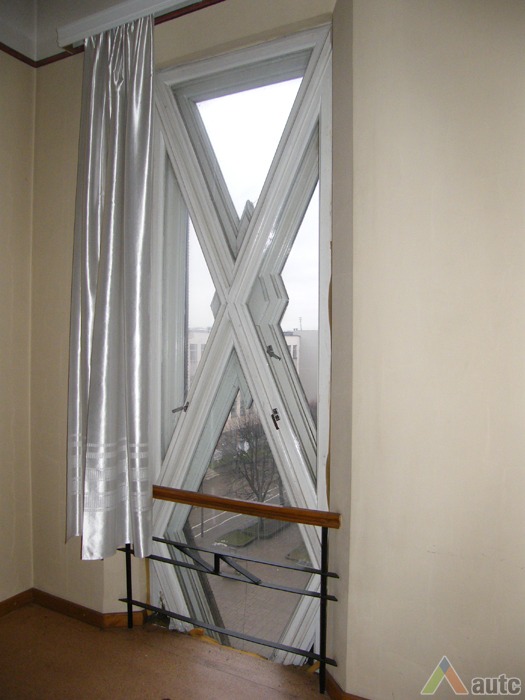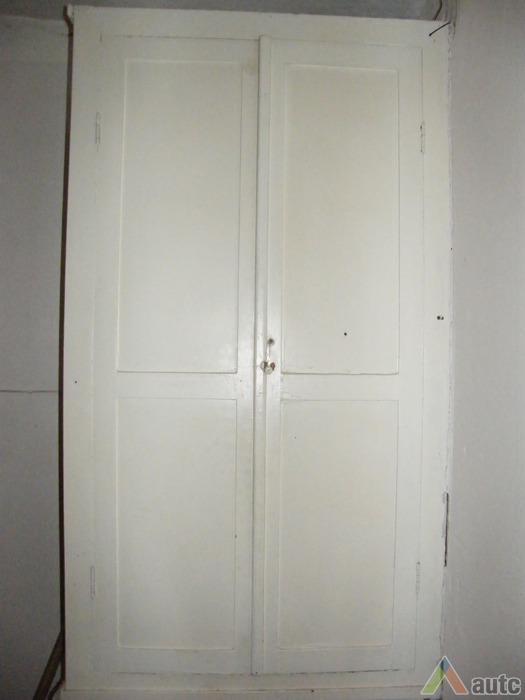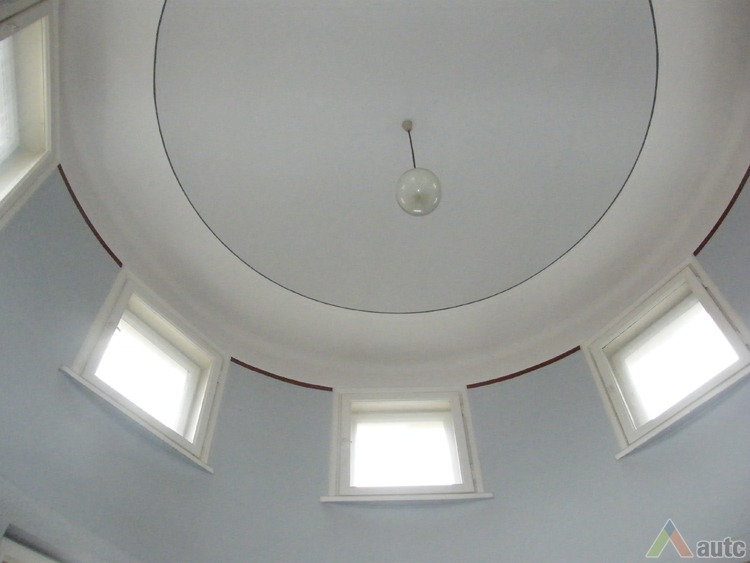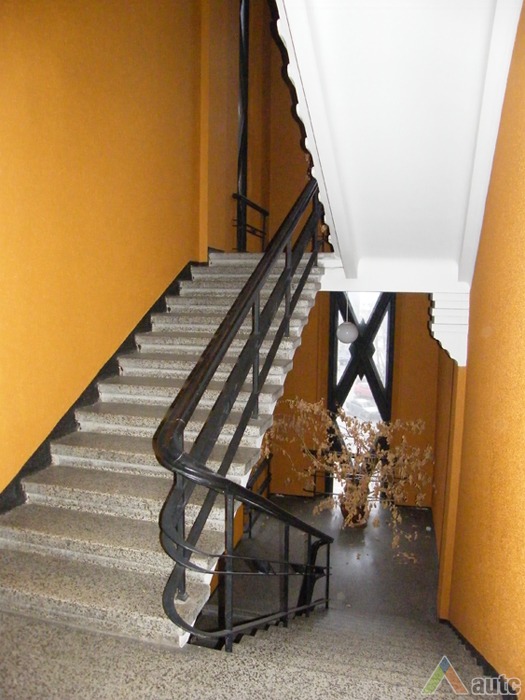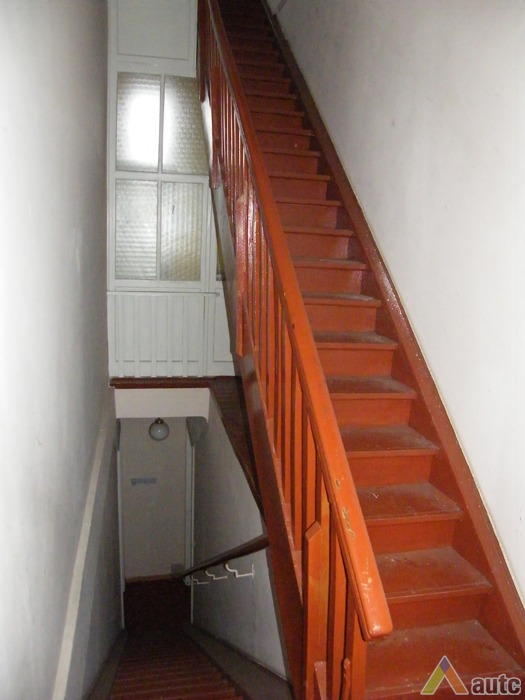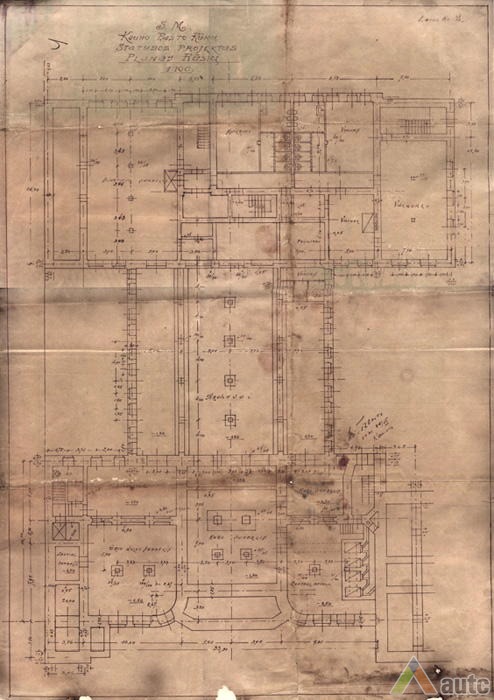


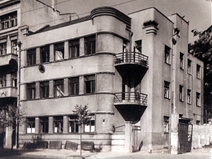




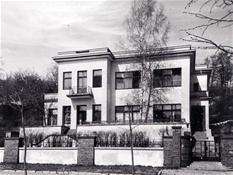

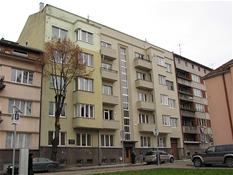
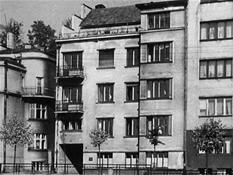



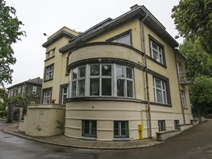












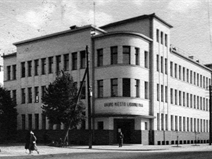



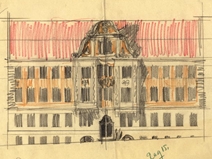
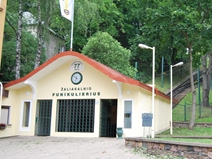




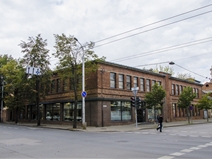



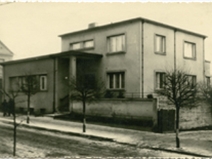
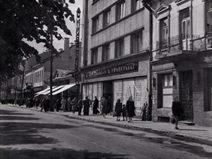





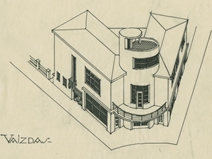






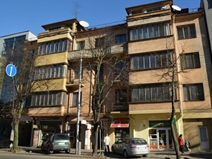

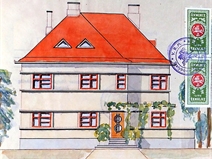






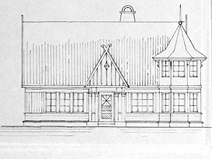


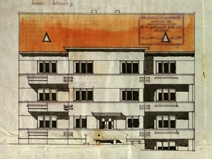
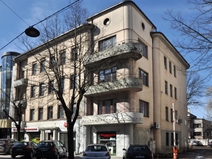
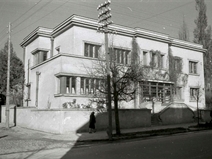



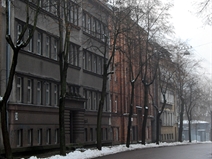





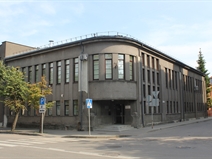








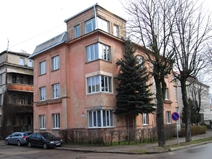
The object may be considered one of the key representative buildings of the interwar period in Kaunas. It is also the most significant building of interesting functional type (apart from this post office, a number of other monumental post office buildings built in Lithuanian cities in the 1930s deserve a special mention as well: Raseiniai (1934), Šiauliai (1938), Šančiai (1935), etc.). The beginning of construction of the post office is associated with 1930, which was designated as the Year of Vytautas the Great (even though the ideas on the need of such a building were expressed as far back as 1924): "The projection on the right features a plaque with both sides of the medal of Vytautas the Great containing an inscription in golden letters which says what determined the construction of the building in 1930-1931." The architect of the building Feliksas Vizbaras was then a senior inspector at the Ministry of Transport and Communications (in fact, Gaigalis, the engineer of the Construction Division of the Post Office Board, had prepared the central post office project some time before).
The building designed at the time, when the global economic crisis had not yet gained momentum, does not only distinguish by the combination of elements of modernism and "national style" but also a rather luxurious interior (the construction of the post office cost approximately 1,500,000 litas; other 250,000 litas was spent for decorations and facilities). It should be noted that like a number of other constructions of that time, it could not happen without certain scandals. For instance, the periodical Paštininkų žodis noted that "a number of old bricks were used in certain chief walls. Perhaps it is provided for in the contract with contractors, if not - someone will benefit from it". The interwar press included a number of rather bitter feedbacks of post office employees on the functionality of the building. It was even assumed that "the building was first erected and then it was adjusted to the post office. Such manifestations create a rather sad impression". In Soviet times, the interior of the post office underwent certain modifications: "In 1978-1980, the upper windows of the hall were glazed with stained-glass, the walls were veneered, the lobby was covered with dolomite plates; the layout of certain office spaces was changed."
Even though today the curved striped windows make us consider the building to be one of the predecessors of Lithuanian functionalism, Feliksas Vizbaras primarily saw his building as the example of "national style", where, among other things, "a tie woven by some unknown devotional weaver from Skapiškis" was used in its décor. Even the principles of modernism - "when designing the building, the author adhered to the requirements of contemporary modern construction in the project: more space and light, clear division of apartments, avoidance of unnecessary architectural decorations as they are called" - are associated with the objective inherent in the Lithuanian character "to have a clear situation in front of us". The interior of the post office abounds in the works of the most well-known artists of the day: "The top of the hall is adorned with the stamps of Vilnius, Grodno and Klaipėda and three paintings by the artist Šimonis, where the central painting pictures a Lithuanian girl with a shield featuring the Vytis and the Gediminas Hill in the distance. Below, 103 Lithuanian stamps by the artist Kalpokas encircle the entire hall."
Despite the decorative aspect, the building became the benchmark of modern construction in the society of the time. A multi-storey building (four storeys and a basement) equipped with modern elevators, spacious operations hall, convenient working conditions (even the showers were installed for the convenience of employees), an electricity-driven clock mounted in the main façade in 1935 had become one of the key architectural highlights in the temporary capital. It is interesting that the staircase near the central post office has remained an important urban attraction. Hence, the post office displays a particularly close link between the ideas of modern architecture and the then-active thoughts of "national style". It is one of the most organic combinations of the two ideological engines of the interwar architecture - modernity and nationality.
Vaidas Petrulis
